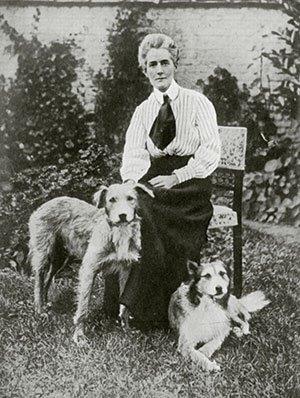 Edith Cavell was a British nurse who is celebrated for saving the lives of soldiers on both sides of the conflict in WW1. She was executed in October 1915 for her role in helping Allied soldiers escape from German-occupied Belgium.
Edith Cavell was a British nurse who is celebrated for saving the lives of soldiers on both sides of the conflict in WW1. She was executed in October 1915 for her role in helping Allied soldiers escape from German-occupied Belgium.
Cavell was born in the village of Swardeston, Norfolk, in 1865. Her father was a vicar at the local parish church. Until the age of 16, she was taught at home by her father and a resident governess. She had a talent for languages, particularly French, and a love of drawing.
Between 1882 and 1884, she went to 3 different boarding schools, in different parts of the country. Her father chose her schools through his church connections, and according to the financial concessions they offered to the clergy. These schools were finishing schools that were designed to equip young women with skills in housewifery and ‘genteel femininity’. Her father was keen for her to be the wife of a doctor or clergyman, or if unmarried, a governess in the house of a well-to-do family.
At the age of 22, Cavell became a governess for a family in Keswick, a nearby village, before accepting a post in Brussels in 1890, when she was 25. Although she enjoyed her time with a Belgian family, she wrote to her cousin and said: ‘Being a governess is only temporary, but someday, somehow, I am going to do something useful. I don’t know what it will be; I only know it will be something for people.’
In 1895, her father suddenly became ill, so she returned to Norfolk to nurse him back to health. It was during this time that her interest in nursing was piqued, and she moved to London to commence her training. She registered at the London Hospital School of Nursing in September 1896, and worked in a number of London hospitals, before moving to Manchester to take on the duties of matron.
In 1907, Cavell returned to the city she loved, Brussels, to take up the post of director at the Berkendael Institute, a training school for nurses. The school was the first of its kind in Belgium and one of the first in Europe. By 1912, she was providing trained nurses for 3 hospitals, 24 communal schools and 13 kindergartens, and by 1914, she was giving 4 lectures a week to doctors and nurses.
Cavell’s work was interrupted by the outbreak of war in August 1914 (Gazette supplement 28861). She was weeding her mother's garden when she heard news of the German invasion of Belgium, but could not be persuaded to stay in England. "At a time like this", she said, "I am more needed than ever", and she returned to Brussels.
Both the French and British armies – withdrawing from the defeat at Mons on 23 August – were cut off by the German advance. Two British evaders from the Cheshire Regiment found their way to the Berkendael Institute and were given food and shelter. Others followed, and an escape line began to emerge between Brussels and Holland.
The school became a Red Cross hospital, with German soldiers receiving the same attention as allied men. For over a year, Cavell supported the Belgian resistance movement by helping to spirit away over 200 allied soldiers to Holland. However, when 2 members of the resistance were arrested on 31 July 1915, and letters were found incriminating her, the German secret police were quick to arrest and interrogate her.
Cavell was tricked into confessing the role she played in helping allied soldiers to escape – a capital offence under German penal code – and was sentenced to death by firing squad, despite appeals for clemency. She was shot at dawn on the morning of 12 October, 1915. Cavell did not criticise those who condemned her or failed to help her, even when facing death.
Her body was immediately buried next to Saint Gilles prison. After the war, her remains were taken back to Britain for a memorial service at Westminster Abbey and then transferred to Norwich, to be laid to rest at Life's Green, on the east side of the cathedral, on 19 May 1919. The King had to grant an exception to an Order in Council of 1854 which prevented any burials in the grounds of the cathedral, to allow the reburial (Gazette issue 31332).
Her legacy lives on today. There are a number of memorials dedicated to her across the world, as well as medical and nursing facilities, streets and schools. The Cavell Nurses’ Trust supports the UK’s registered nurses and midwives, should they fall on hard times, and 2015 sees a £5 coin issued by the Royal Mint to mark the centenary of her death.